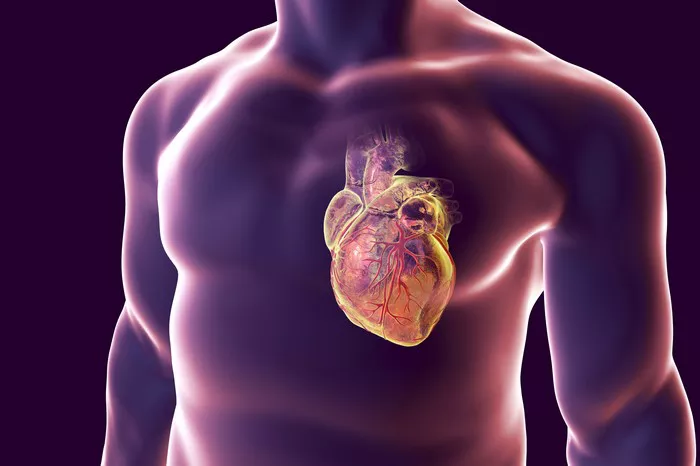The left main coronary artery (LMCA) is a crucial component of the human cardiovascular system, responsible for supplying oxygenated blood to a significant portion of the heart muscle. This vital artery plays a pivotal role in cardiac function and is essential for maintaining overall cardiovascular health. Understanding the anatomy, function, clinical significance, and various pathologies associated with the left main coronary artery is fundamental for healthcare professionals involved in the diagnosis and management of cardiovascular diseases.
Anatomy and Structure
The left main coronary artery arises from the left aortic sinus, also known as the left coronary cusp, located just above the aortic valve in the ascending aorta. It typically branches into two main arteries: the left anterior descending artery (LAD) and the left circumflex artery (LCx). The LAD travels down the anterior interventricular groove, supplying blood to the anterior wall of the left ventricle and a significant portion of the interventricular septum. Meanwhile, the LCx courses around the left atrium and crosses the posterior surface of the heart, providing blood to the lateral and posterior walls of the left ventricle.
The left main coronary artery is relatively short but critical, as it delivers oxygenated blood to approximately two-thirds of the myocardium. Any obstruction or compromise in blood flow through this artery can lead to severe consequences, including myocardial infarction and sudden cardiac death.
Physiology and Function
The primary function of the left main coronary artery is to supply oxygen and nutrients to the myocardium, ensuring proper cardiac function. During diastole, when the heart is relaxed and filling with blood, coronary perfusion occurs as the coronary arteries receive blood flow from the aorta. This perfusion is crucial for meeting the metabolic demands of the heart muscle, especially during periods of increased activity or stress.
The left main coronary artery plays a central role in regulating coronary blood flow and maintaining myocardial oxygen supply. It responds dynamically to changes in cardiac output, arterial pressure, and metabolic demands through a complex interplay of autoregulatory mechanisms involving endothelial function, neurohormonal factors, and local metabolic factors.
Clinical Significance
Pathologies affecting the left main coronary artery pose a significant threat to cardiovascular health and can lead to life-threatening complications if left untreated. Atherosclerosis, characterized by the buildup of plaque within the arterial walls, is the most common cause of coronary artery disease (CAD) and can affect the left main coronary artery, leading to stenosis or occlusion.
Left main coronary artery disease (LMCAD) is particularly concerning due to its potential to compromise blood flow to a large portion of the heart muscle. Patients with significant stenosis or occlusion of the left main coronary artery are at increased risk of myocardial infarction, heart failure, and sudden cardiac death. Prompt diagnosis and appropriate management are essential for improving outcomes and reducing mortality rates in individuals with LMCAD.
Diagnostic Modalities
Accurate diagnosis of left main coronary artery disease requires a multimodal approach, incorporating clinical assessment, non-invasive imaging modalities, and invasive coronary angiography. Patient history, risk factors, and presenting symptoms play a crucial role in guiding diagnostic evaluation.
Non-invasive imaging techniques such as coronary computed tomography angiography (CTA), cardiac magnetic resonance imaging (MRI), and stress echocardiography provide valuable information about coronary anatomy, plaque burden, and myocardial perfusion. These modalities help identify patients at risk for left main coronary artery disease and guide further management decisions.
Invasive coronary angiography remains the gold standard for assessing coronary artery anatomy and identifying obstructive lesions. This procedure involves the insertion of a catheter into the coronary arteries, allowing for direct visualization of luminal narrowing, plaque morphology, and collateral circulation. Fractional flow reserve (FFR) and intravascular ultrasound (IVUS) are adjunctive tools used during coronary angiography to assess the functional significance and composition of coronary lesions.
Treatment Strategies
The management of left main coronary artery disease is guided by the severity of stenosis, extent of myocardial ischemia, patient symptoms, and overall cardiovascular risk profile. Treatment options include medical therapy, percutaneous coronary intervention (PCI), and coronary artery bypass grafting (CABG).
Medical therapy aims to optimize cardiovascular risk factors and reduce the progression of atherosclerosis through lifestyle modifications and pharmacological interventions. Antiplatelet agents, statins, beta-blockers, angiotensin-converting enzyme (ACE) inhibitors, and nitrates are commonly prescribed medications for patients with left main coronary artery disease.
Percutaneous coronary intervention (PCI) with stent placement is a minimally invasive procedure used to relieve coronary artery stenosis and restore blood flow to the myocardium. Drug-eluting stents (DES) are preferred over bare-metal stents (BMS) due to their superior efficacy in reducing restenosis rates and improving long-term outcomes.
Coronary artery bypass grafting (CABG) may be recommended for patients with complex coronary anatomy, multivessel disease, or left main coronary artery disease unsuitable for PCI. CABG involves the surgical placement of bypass grafts to reroute blood flow around obstructed coronary arteries, restoring myocardial perfusion and relieving angina symptoms.
Complications and Prognosis
Despite advances in diagnostic and therapeutic interventions, left main coronary artery disease remains associated with significant morbidity and mortality. Complications such as acute myocardial infarction, ventricular arrhythmias, heart failure, and cardiogenic shock can occur suddenly and require prompt intervention.
The prognosis of patients with left main coronary artery disease depends on various factors, including the extent and severity of coronary artery disease, left ventricular function, comorbidities, and response to treatment. Timely revascularization and aggressive secondary prevention strategies play a crucial role in improving outcomes and reducing the risk of adverse cardiovascular events.
Conclusion
The left main coronary artery is a critical conduit for myocardial perfusion, supplying oxygen and nutrients to a substantial portion of the heart muscle. Understanding its anatomy, function, clinical significance, and associated pathologies is essential for healthcare professionals involved in the management of cardiovascular diseases. Early detection, accurate diagnosis, and timely intervention are paramount for optimizing outcomes and improving the quality of life for patients with left main coronary artery disease. Through comprehensive risk assessment, personalized treatment strategies, and close follow-up, healthcare providers can effectively mitigate the impact of coronary artery disease and enhance long-term cardiovascular health.


